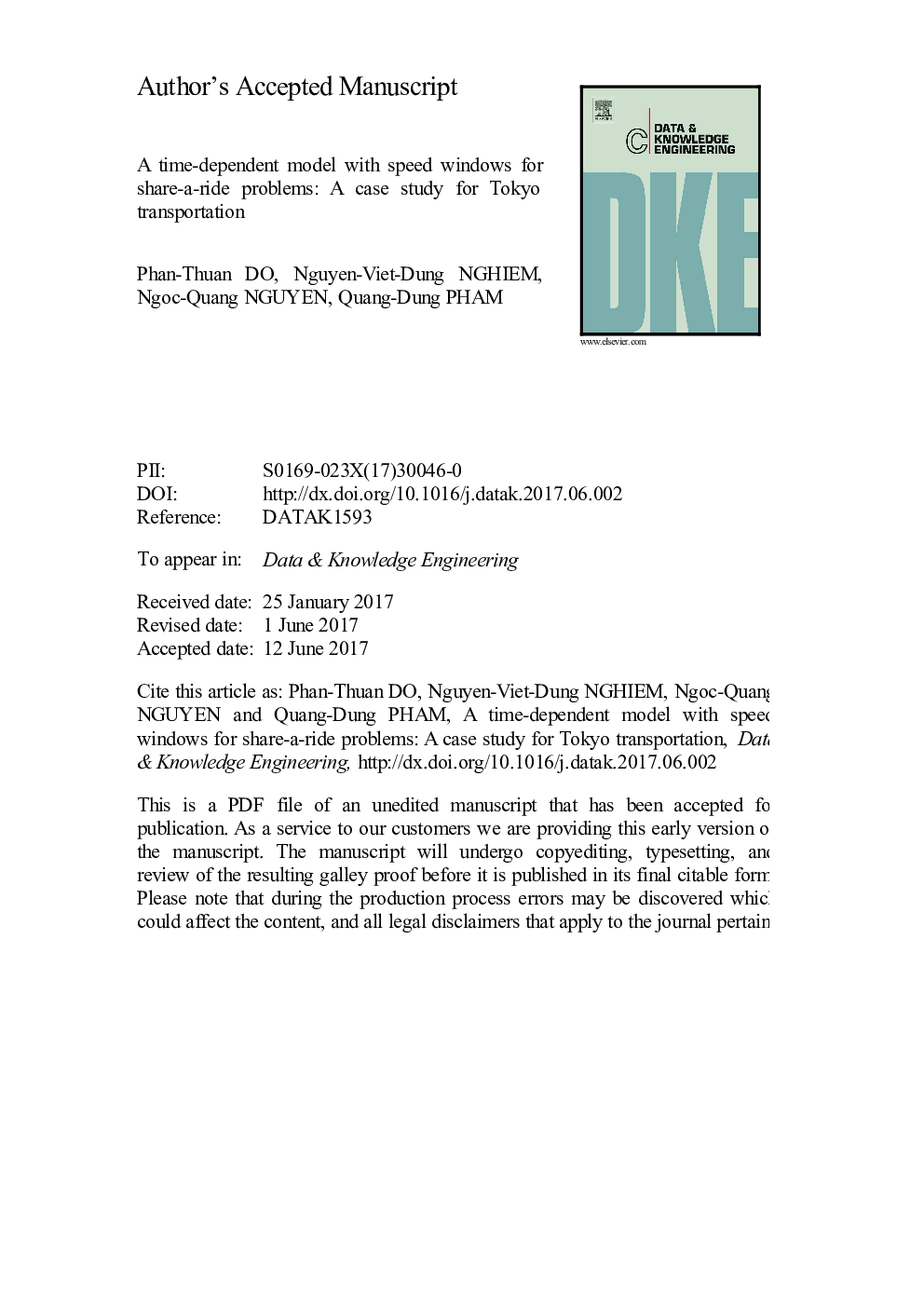| Article ID | Journal | Published Year | Pages | File Type |
|---|---|---|---|---|
| 6853947 | Data & Knowledge Engineering | 2018 | 40 Pages |
Abstract
This paper introduces a new fully time-dependent model of a public transportation system in the urban context that allows sharing a taxi between one passenger and parcels with speed widows consideration. The model contains many real-life case features and is presented by a mathematical formulation. We study both static and dynamic scenarios in comparison to traditional strategies, i.e., the direct delivery model. Moreover, we classify speed windows by different zones and congestion levels during a day in the urban context. Different speed windows induce the dynamic graph model for road networks and make the problem much more difficult to solve. Because of the complex model, the preprocessing steps on data as well as on dynamic graphs are very important. We use a greedy algorithm to initiate the solution and then use some local search techniques to improve the solution quality. The experimental data set is recorded by Tokyo-Musen Taxi company. The data set includes more than 20000 requests per day, more than 4500 used taxis per day and more than 130000 crossing points on the Tokyo map. Experimental results are analyzed on various factors such as the total benefit, the accumulating traveling time during the day, the number of used taxis and the number of shared requests.
Keywords
Related Topics
Physical Sciences and Engineering
Computer Science
Artificial Intelligence
Authors
Phan-Thuan Do, Nguyen-Viet-Dung Nghiem, Ngoc-Quang Nguyen, Quang-Dung Pham,
